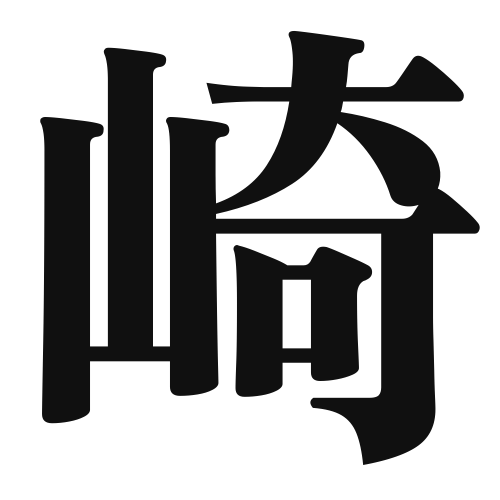1. Overview of Meaning
The kanji “崎” (saki) generally means “cape” or “promontory,” referring to a pointed piece of land that juts out into a body of water. It is often used in geographical names in Japan.
2. Formation and Radical
Formation of the Kanji: The kanji “崎” is a phonetic-ideographic character (形声文字) that combines the meaning of a geographical feature with a phonetic component. The left part of the character is “山” (mountain), which suggests a landform, while the right part is “奇” (strange), which contributes to the pronunciation.
Radical: The radical for “崎” is “山” (mountain), indicating its connection to landforms and topography.
3. Examples of Usage
Common Words and Phrases: “岬” (misaki) means “cape,” and “崎” is often found in place names like “三崎” (Misaki) or “崎山” (Sakiyama).
Example Sentences in Daily Conversation:
- 「あの岬はとても美しいです。」(That cape is very beautiful.)
- 「崎山に登るのが好きです。」(I like climbing Sakiyama.)
4. Synonyms and Antonyms
Similar Kanji: “岬” (misaki) also means “cape,” but it specifically refers to a point of land extending into the sea, while “崎” can refer to any pointed landform.
Antonyms: There are no direct antonyms for “崎,” but one could consider “平” (hira), meaning “flat” or “level,” as it represents the opposite of a pointed or elevated landform.
5. Cultural and Historical Background
Connection to Japanese Culture: The concept of “崎” is significant in Japan, where many beautiful capes and promontories are popular tourist destinations. They often feature in traditional poetry and art.
Proverbs and Idioms: While there may not be specific proverbs that include “崎,” the beauty of capes is often celebrated in Japanese literature, symbolizing the meeting of land and sea.
